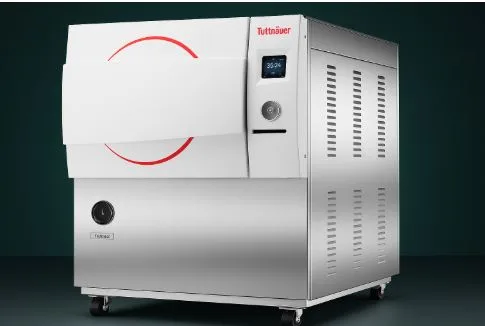How to Pick the Best Autoclave for Your Medical Practice
Medical facilities face a critical decision when selecting sterilization equipment. The right autoclave can make the difference between efficient operations and costly delays. Whether you run a small clinic or manage a large laboratory, understanding your sterilization needs is essential for patient safety and regulatory compliance.
This guide will help you navigate the world of Autoclaves and Sterilizers . You’ll learn about different types, key features to consider, and how to match equipment to your specific requirements. By the end, you’ll have the knowledge needed to make an informed decision that serves your practice for years to come.
Understanding Autoclaves and Sterilizers
An autoclave is a machine that uses steam, pressure, and heat to kill germs and bacteria on medical instruments. Think of it as a super-powered pressure cooker designed specifically for medical use. The process, called steam sterilization, reaches temperatures of 250-270°F (121-132°C) at high pressure.
Sterilizers work by creating an environment where harmful microorganisms cannot survive. The combination of moist heat and pressure penetrates even the smallest crevices of instruments, ensuring complete sterilization. This process is crucial for preventing infections and maintaining sterile conditions in medical settings.
Different types of sterilizers use various methods beyond steam. Some use dry heat, while others rely on chemical processes or radiation. However, steam autoclaves remain the most common choice for most medical facilities due to their effectiveness and reliability.
Types of Autoclaves for Different Settings
Table-Top Autoclaves
Table-top autoclaves are compact units perfect for smaller practices. These machines typically handle 1-5 gallons of instruments per cycle. They’re ideal for dental offices, small clinics, and specialty practices with limited space.
The main advantages include lower cost, easy installation, and simple operation. Most table-top units can be plugged into standard electrical outlets and require minimal training to operate. However, they have limited capacity and may not be suitable for high-volume practices.
Floor-Standing Autoclaves
Floor-standing models offer more capacity and advanced features. These units can handle 10-50 gallons per cycle, making them suitable for larger clinics and small hospitals. They often include programmable cycles, advanced monitoring systems, and better insulation.
These autoclaves typically require professional installation and may need special electrical connections. The investment is higher, but the increased efficiency and capacity often justify the cost for busy practices.
Large-Capacity Hospital Autoclaves
Hospital-grade autoclaves are designed for high-volume sterilization. These massive units can process hundreds of instruments simultaneously. They feature multiple chambers, advanced computer controls, and sophisticated monitoring systems.
Large facilities often use these autoclaves for central sterilization departments. They can handle complex loads including wrapped instruments, textiles, and laboratory equipment. The initial investment is substantial, but the per-cycle cost becomes very economical with high usage.
Key Features to Consider
Chamber Size and Capacity
The chamber size determines how many instruments you can sterilize at once. Measure your typical load size and choose a chamber that can accommodate your busiest days. Remember that overcrowding the chamber can prevent proper steam circulation and reduce sterilization effectiveness.
Consider both the volume and the dimensions of the chamber. Some tall instruments may not fit in compact units, even if the volume seems adequate. Plan for future growth when selecting capacity.
Cycle Options and Flexibility
Different materials require different sterilization cycles. Wrapped instruments need longer exposure times than unwrapped items. Heat-sensitive materials may require lower temperatures with extended cycles.
Look for autoclaves with multiple pre-programmed cycles. This flexibility allows you to optimize sterilization for different types of loads. Some advanced units even allow custom programming for special requirements.
Monitoring and Documentation
Modern autoclaves include sophisticated monitoring systems that track temperature, pressure, and time throughout each cycle. These systems provide printed records that help maintain compliance with regulatory requirements.
Digital displays show real-time cycle progress and alert operators to any problems. Some units can connect to computer networks for centralized monitoring and record-keeping.
Matching Equipment to Your Practice Type
Small Clinics and Private Practices
Small practices typically need reliable, easy-to-use equipment that doesn’t require extensive maintenance. Table-top autoclaves often provide the best value for these settings. Look for units with simple controls and clear indicators.
Consider your daily instrument turnover. If you process instruments continuously throughout the day, choose a unit with faster cycle times or consider having two smaller units rather than one large one.
Dental Offices
Dental practices have unique requirements due to the variety of instruments and materials they use. Many dental tools are delicate and require careful handling. Some materials, like certain plastics, need special low-temperature cycles.
Choose autoclaves designed specifically for dental use. These units often include special racks and holders designed for dental instruments. They may also have shorter cycles optimized for the types of materials commonly used in dentistry.
Laboratories and Research Facilities
Laboratories need versatile equipment that can handle a wide range of materials. Research facilities often sterilize glassware, culture media, and specialized equipment that may have unique requirements.
Look for autoclaves with flexible programming options and precise temperature control. Some laboratory applications require validation and documentation beyond what’s needed in clinical settings.
Installation and Maintenance Considerations
Space Requirements
Autoclaves should have enough space in which they operate and maintain. The amount of space that is required to open doors and controls as well as the footprint of the unit should be considered. Keep loading and off-loading instruments safely.
The important thing in the autoclave is ventilation. Gaseous condensates are required to get steam exhausted and the room temperature is to be controlled to avoid overheating. Some units require special ventilation systems or exhaust connections.
Utility Requirements
Different autoclaves have varying requirements for electricity, water, and drainage. Table-top units might just be requiring normal electric connections whereas bigger units may require some 220V power or even three-phase electric connections.
The quality of water influences the autoclave function and durability. The hardness of the water can provoke the gathering of minerals and the water of low quality can result in the reservations on instruments. Think about water treatment systems in case the quality of water in your area is not good.
Maintenance and Service
It has to be maintained frequently to be operational and compliant. Select the equipment based on its manufacturers that are offering good local technical support. Take into consideration parts availability and reputation of the manufacturer based on service.
Certain maintenance should be done by the practice staff and some others should consist of trained technicians. You should know what it takes to maintain it, and also monitor your budget to sustain its use even after buying it.
Regulatory Compliance and Standards
FDA Requirements
Sterilization of medical equipment falls under the regulation of FDA and autoclave must be of a certain standard. These regulations provide sterilization processes with effectiveness and reproducibility. Choose equipment that meets FDA requirements for your intended use.
FDA compliance includes documentations as an important element. Your autoclave ought to give sufficient data of sterilization cycle such as temperature and time, and pressure. Such records can be made necessary in inspection and audits.
State and Local Regulations
Most of the states also impose extra requirements on medical sterilization equipment. This can be in the form of certain tests to be undertaken, maintenance schedules or training that is required by operators. See what local regulations are in your state health department.
There are other requirements on some specialties. As an example, surgical centers might have to adhere to other standards than ordinary medical practices. Know the unique needs of your kind of practice.
Cost Considerations and Budgeting
Initial Purchase Price
The prices of autoclave widely vary depending on the size, feature, and quality. Table-top models can range in cost a few thousand dollars, and large hospital autoclaves can range in many cases half a million dollars or more. Think of what you demand, so you do not waste money on features you do not need.
Do not pay attention to the price only. The total cost of ownership which is composed of the installation cost and the cost of training, maintenance cost and also the operating cost. In other cases the initial greater cost can even be economical in the context of the life of the equipment.
Making the Right Choice for Your Practice
Selecting the right autoclave requires careful consideration of your current needs and future plans. Start by evaluating your daily instrument volume and types. Consider your space constraints and utility availability.
Quality medical equipment suppliers can provide valuable guidance in selecting appropriate equipment. Firms such as the Quince Medical engage in assisting the healthcare facilities to make the appropriate decisions regarding the Autoclaves and Sterilizers Machines to meet its needs. They are able to offer specifications, put in place demonstrations and even support.
Never hurry about the decision. Give yourself time to study the alternatives available and to interview other practices on their experiences. The right autoclave will serve your practice reliably for many years, making this an investment worth careful consideration.
Your Next Steps to Better Sterilization
The decision made regarding which autoclave you want to purchase will make or break your practice and endanger patient lives. It all begins with determining your current and future requirements. Take into account the kind of instrument you sterilize, your daily work and your space.
Find out the manufacturers and models which suit your needs out there and research them. Where you can request demonstrations, and of those already using, talk to them regarding their experiences.
It is vital to remember that a good equipment partner can have a lasting impression. Seek out a supplier that will provide the widest support end to end, including selection, service, and maintenance.
Action: today is the day to consider your existing sterilization processes and how you can make these or anything to do with the process better. By investing in quality sterilization equipment, the returns are efficiency, reliability and peace of mind.





